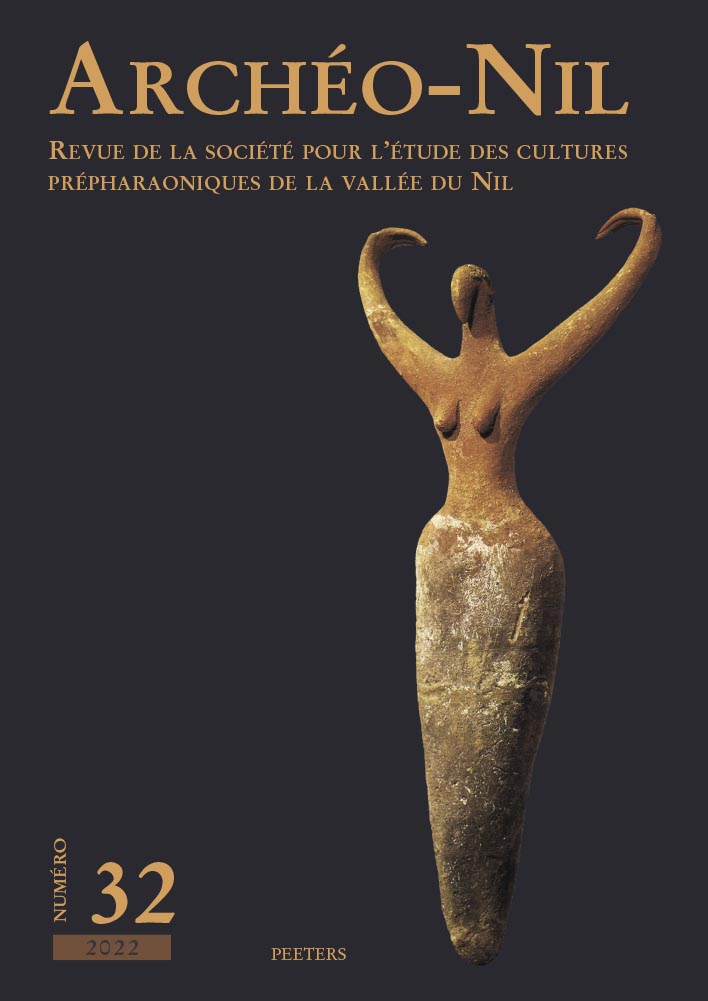 previous article in this issue previous article in this issue | next article in this issue  |

Preview first page |
Document Details : Title: The So-Called 'Statue of Hetepdief' and the Rise of Re Subtitle: Early Dynastic Reflections on 3ḫw and Kingship Author(s): FRITSCHY, Wantje Journal: Archéo-Nil Volume: 32 Date: 2022 Pages: 9-23 DOI: 10.2143/ANI.32.0.3291129 Abstract : Stimulated by Scott J. Allan’s new interpretation of the inscriptions on the pedestal and the shoulder of the Early Dynastic statue known as ‘Hetepdief’, this article offers yet another new interpretation of the earliest known lines of extended text on the earliest known private statue of ancient Egypt. It concludes that the text on the pedestal is not a list of offerings, but that it describes the statue as someone offering ‘fragrance’. It argues that the bird-sign on the ‘triangle with a rounded top’ in the two inscriptions should be interpreted as an early way of expressing the concept 3ḫ and it proposes that the statue should be titled ‘Merakhu’ rather than ‘Hetepdief’. In addition, it shows that the occurrence of the term 3ḫw before a sequence of royal names may mirror views on the Afterlife of kings. It suggests that the appearance of the concept 3ḫ in this context is related to reflections on the supremacy of Re relative to Horus and Seth in Early Dynastic conceptions of kingship and that, as such, it prefigures a text like Spell 305 of the Pyramid Texts. Stimulé par la nouvelle interprétation que Scott J. Allan a fait des inscriptions sur le piédestal et l’épaule de la statue protodynastique connue sous le nom de «Hetepdief», cet article propose une autre interprétation du plus ancien texte élaboré sur la plus ancienne statue privée documentée. L’auteure propose que le texte sur le piédestal n’est pas une liste d’offrandes, mais qu’il décrit la statue comme une personne offrant un «parfum». Elle soutient que le signe de l’oiseau sur le «triangle au sommet arrondi» dans les deux inscriptions doit être interprété comme une manière archaïque d’exprimer le concept 3ḫ et propose que la statue soit intitulée «Merakhou» plutôt que «Hetepdief». En outre, elle montre que l’apparition du terme 3ḫw devant une séquence de noms royaux peut refléter des vues sur la vie post-mortem des rois. Elle suggère que l’apparition du concept 3ḫ dans ce contexte est liée à des réflexions sur la suprématie de Rê par rapport à Horus et Seth dans les conceptions de la royauté des premiers dynasties et, à ce titre, préfigure des textes comme le chapitre 305 des Textes des Pyramides. |
|


